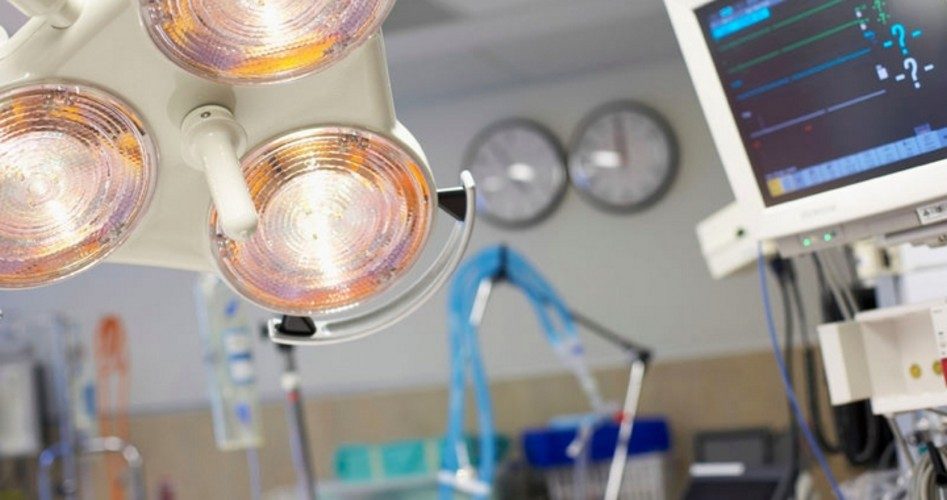
“I think that it is very important that we provide [health] coverage for all people, because if everybody’s got coverage then they’re not going to the emergency room for treatment,” President Barack Obama said in 2009.
The next year, ObamaCare became law. This year, its provisions to expand both public and private coverage went into effect, and guess what: According to a recent online poll of emergency physicians conducted by the American College of Emergency Physicians (ACEP), ER visits are up, not down, adding to the woes of already strained emergency departments across the country.
“Nearly half of emergency physicians responding to a poll are already seeing a rise in emergency visits since January 1 when expanded coverage under the Affordable Care Act (ACA) began to take effect,” ACEP stated in a press release. Moreover, “86 percent expect emergency visits to increase over the next three years. More than three-fourths (77 percent) say their ERs are not adequately prepared for significant increases.”
“Emergency visits will increase in large part because more people will have health insurance and therefore will be seeking medical care,” said Alex Rosenau, DO, FACEP, president of ACEP. “But America has severe primary care physician shortages, and many physicians do not accept Medicaid patients, because Medicaid pays so low. When people can’t get appointments with physicians, they will seek care in emergency departments. In addition, the population is aging, and older people are more likely to have chronic medical conditions that require emergency care.”
This was, in fact, entirely predictable, Obama’s (and others’) assertions to the contrary notwithstanding.
“Think of health coverage as an across-the-board price cut for all medical services,” Columbia Business School economics professor Ray Fisman explained in a piece for Slate. “When prices go down, demand goes up, so insurance naturally leads to more health care use overall, including emergency care.”
Studies of Oregon’s 2009 Medicaid expansion bear this out. One “found that enrolling in the public program increased hospital visits, primary care trips and prescription drug use,” according to Sarah Kliff of the Washington Post. Another concluded that “over an 18-month period following the Medicaid expansion, Oregonians who received coverage under the program actually visited ERs 40 percent more frequently than those who did not,” The New American reported.
The ACEP poll found that 35 percent of emergency physicians report seeing more Medicaid patients this year, while 27 percent say they are seeing fewer privately insured patients.
“With the Medicaid expansion and the Affordable Care Act, people have insurance but they can’t get in to see their primary care physician. So they’re going to the emergency department” with minor conditions, even though “the whole intent [of the ACA] was to get the sore throats, coughs, congestion and whatnot” out of the ERs, New Jersey ER physician Dr. Michael Murphy told CNSNews.com.
As ACEP’s Rosenau observed, many newly insured patients are unable to get appointments with primary-care doctors because of a general shortage of physicians and a specific dearth of doctors willing to accept Medicaid patients. More than one in five Americans is now enrolled in Medicaid, thanks in no small measure to the ACA’s expansion of the program.
Another source of the trouble with seeing a physician is the coverage available on the ObamaCare exchanges. In order to keep costs down, many exchange policies have narrow networks of healthcare providers, often preventing those who bought these policies from seeing the doctors they desire and boosting demand for those few doctors in the networks.
The increase in ER use as a result of ObamaCare has also exacerbated issues with emergency treatment of psychiatric patients. According to ACEP, “An overwhelming 84 percent of emergency physicians report that psychiatric patients are being held — ‘boarded’ — in their emergency department, with nine in 10 (91 percent) saying that this practice has led to violent behavior by distressed psychiatric patients, distracted staff or bed shortages, all of which may harm patients.” In addition, “more than half of the physicians polled add that the amount of time and effort their emergency department expends to transfer psychiatric patients who need admission has increased since January.”
Overall, said Murphy, ERs are being pressured to treat each patient as quickly as possible, even if quality suffers. “You have to,” he explained. “It’s a simple financial game. If you’re getting paid less per patient, you have to see more patients to keep the lights on.” But, he added, “when you are pressured, and you have to see five, six, seven patients an hour, and you have to do all your own documentation, you’re going to miss stuff.”
Eventually, he predicted, it may not even be possible to get into the nearest ER — which could be miles away. Driven by the ACA’s incentives for cost containment, private practices and hospitals are closing down and consolidating with larger entities, shrinking the number of available providers even as the pool of insured individuals expands.
“I think there’s going to be a point where there’s not enough to go around and care is going to be rationed unless you’re paying premium top dollar,” Murphy said. “And that’s just an unfortunate reality. It probably won’t happen for another five or ten years unless we have some dramatic thing that happens in the meantime.”
Constitutionalists hope that “dramatic thing” is repeal, nullification, or even a Supreme Court ruling overturning much if not all of ObamaCare. Otherwise, if Murphy’s forecast is accurate, Americans may be faced with the prospect of “death panels” even sooner than the ACA’s greatest foes expected.



